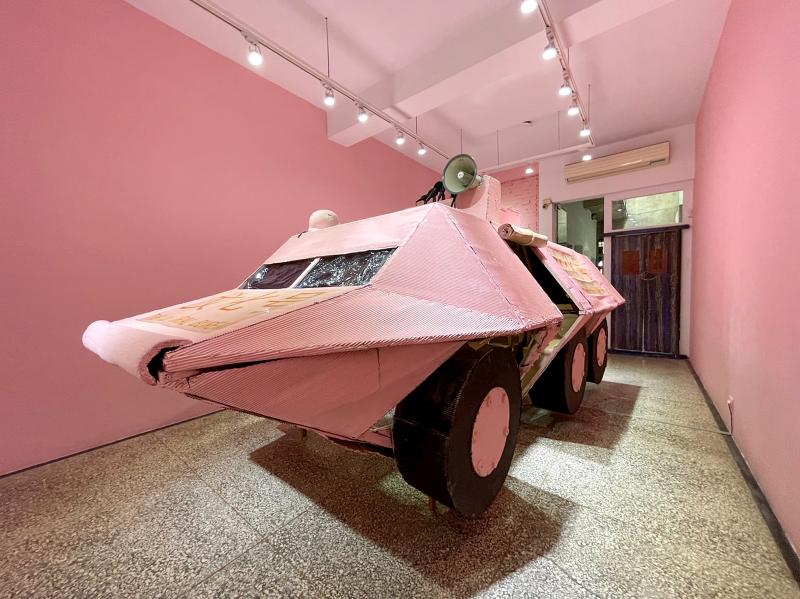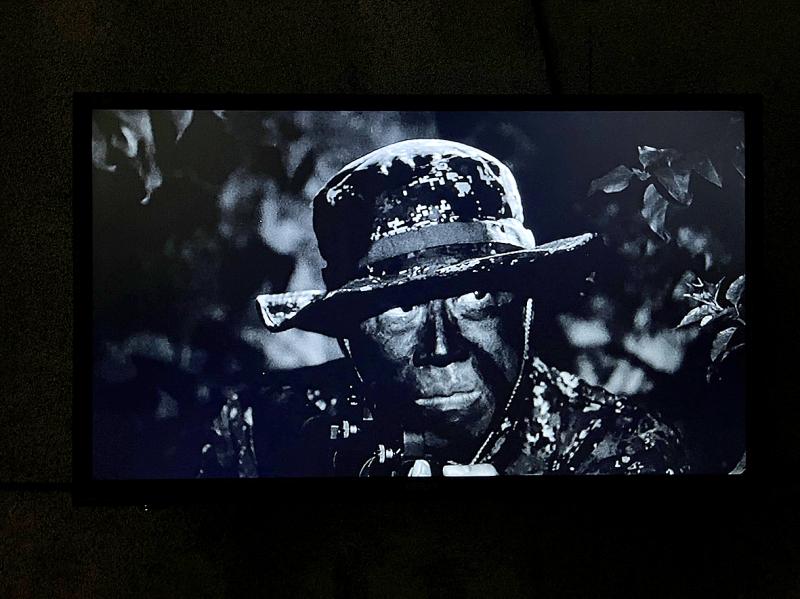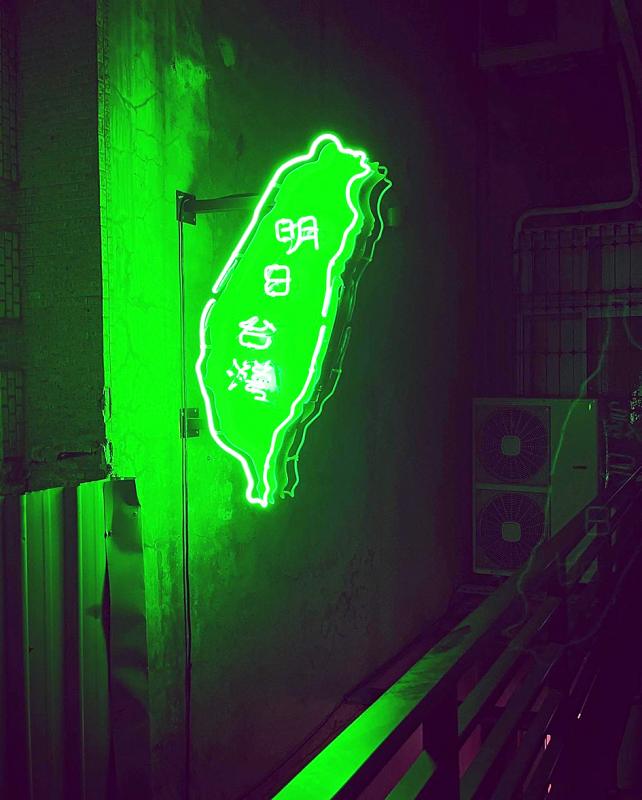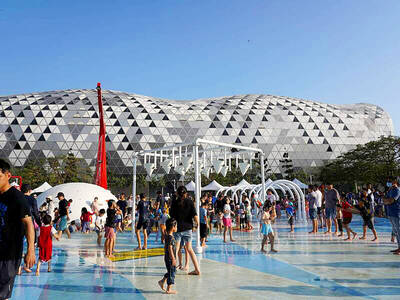Satirical artist Kacey Wong’s (黃國才) latest solo exhibition — his first since moving here from Hong Kong last year — is a wakeup call for Taiwanese.
“They can look at me as an oracle,” says Wong, who was on the front lines of Hong Kong’s 2014 pro-democracy “Umbrella movement” protests. His politically-driven artwork has long skewered the Chinese Communist Party (CCP), most recently focusing on the regime’s authoritarian crackdown, including mass arrests in Hong Kong.
The Tainan exhibition, ominously titled “Battlefield Apocalypse,” features about 20 new and old works of art. Opening last month at 182artspace, the show continues through April 25.

Photo courtesy of Kacey Wong
Wong will give an artist’s talk at the gallery on Sunday, focusing on how art can contribute to political resistance.
The multi-media piece, Ghost Recon, features a video of Wong dressed in soldier’s fatigues. As he walks through the jungle into an abstract world he discovers a dead body, only to realize that he is the one who has died.
“We’re all facing the same fear,” Wong says. “It’s about a heightened sense of anxiety about what may come.”

Photo courtesy of Kacey Wong
In a narrow walkway on the gallery’s rooftop, a flashing red and green neon sign declares that today’s Hong Kong is tomorrow’s Taiwan. It’s a warning, Wong said bluntly, as is the war in Ukraine. While the conflict is being waged far away, it cannot be ignored that something similar could happen here, he says.
The sculpture Dragon Slayer Missile Launcher imagines how Taiwan’s traditional temples would be used to protect the nation against a Chinese invasion. It’s playful but with serious undertones, a common theme of Wong’s artwork.
In 2012, Wong paraded a big pink tank through the streets of Hong Kong to protest what he saw as political corruption and the CCP’s interference in the affairs of the city. Named The Real Culture Bureau, it’s one of the many sculptures Wong brought with him from his flight from Hong Kong — a move he’s characterized as one of self exile.

Photo courtesy of Kacey Wong
Wong said he’s thankful for the artistic freedom he can enjoy in Taiwan. This kind of exhibition, with overtly political artwork, most likely would have landed the 51-year-old artist in a Hong Kong jail.
“I want to show how citizens can fight back with dignity,” Wong says. Taiwanese have the will to stand up to aggression, Wong adds, but it’s a matter of being prepared.
The nation should continue to increase its defense spending while bolstering its ties to the US, Japan and Korea he says.
“But you don’t have to be a soldier to fight,” Wong says. “Everybody can fight.”

The Taipei Times last week reported that the rising share of seniors in the population is reshaping the nation’s housing markets. According to data from the Ministry of the Interior, about 850,000 residences were occupied by elderly people in the first quarter, including 655,000 that housed only one resident. H&B Realty chief researcher Jessica Hsu (徐佳馨), quoted in the article, said that there is rising demand for elderly-friendly housing, including units with elevators, barrier-free layouts and proximity to healthcare services. Hsu and others cited in the article highlighted the changing family residential dynamics, as children no longer live with parents,

Oct 20 to Oct 26 After a day of fighting, the Japanese Army’s Second Division was resting when a curious delegation of two Scotsmen and 19 Taiwanese approached their camp. It was Oct. 20, 1895, and the troops had reached Taiye Village (太爺庄) in today’s Hunei District (湖內), Kaohsiung, just 10km away from their final target of Tainan. Led by Presbyterian missionaries Thomas Barclay and Duncan Ferguson, the group informed the Japanese that resistance leader Liu Yung-fu (劉永福) had fled to China the previous night, leaving his Black Flag Army fighters behind and the city in chaos. On behalf of the

I was 10 when I read an article in the local paper about the Air Guitar World Championships, which take place every year in my home town of Oulu, Finland. My parents had helped out at the very first contest back in 1996 — my mum gave out fliers, my dad sorted the music. Since then, national championships have been held all across the world, with the winners assembling in Oulu every summer. At the time, I asked my parents if I could compete. At first they were hesitant; the event was in a bar, and there would be a lot

The election of Cheng Li-wun (鄭麗文) as chair of the Chinese Nationalist Party (KMT) marked a triumphant return of pride in the “Chinese” in the party name. Cheng wants Taiwanese to be proud to call themselves Chinese again. The unambiguous winner was a return to the KMT ideology that formed in the early 2000s under then chairman Lien Chan (連戰) and president Ma Ying-jeou (馬英九) put into practice as far as he could, until ultimately thwarted by hundreds of thousands of protestors thronging the streets in what became known as the Sunflower movement in 2014. Cheng is an unambiguous Chinese ethnonationalist,